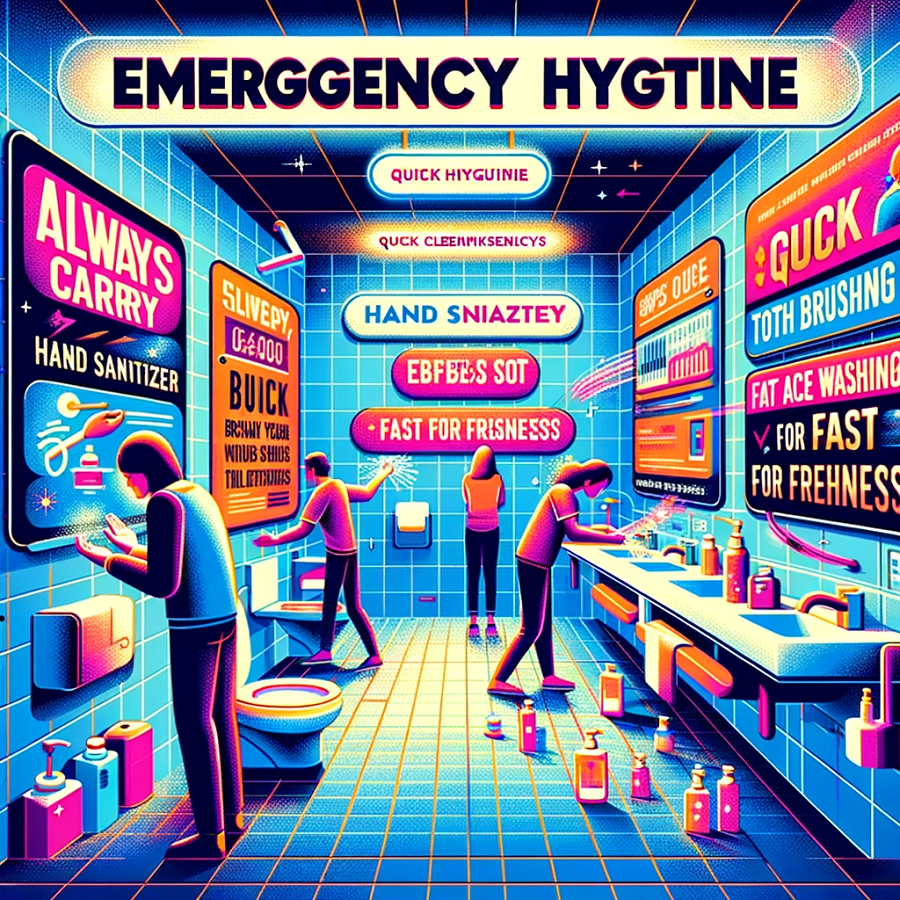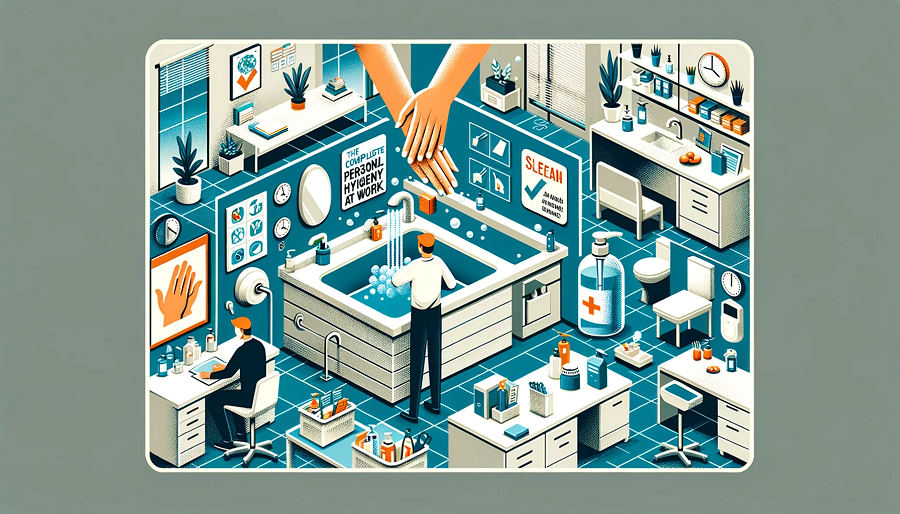In a world where global hygiene practices are both a fundamental necessity and a pressing challenge, understanding their multifaceted nature is essential. From the far-reaching implications of hygiene disparities to the tireless efforts aimed at achieving hygiene equity and the relentless march of innovation in hygiene products, these aspects collectively shape the state of hygiene on a global scale. While disparities persist, initiatives are underway to bridge the gap and ensure that hygiene is a right, not a privilege. Innovations continue to pave the way for more accessible, effective, and sustainable hygiene practices. As we delve deeper into this intricate web of global hygiene, it becomes evident that each of us has a role to play in contributing to better hygiene practices and, in doing so, fostering a healthier and safer world for all.
The Importance of Hygiene
Understanding the Significance of Hygiene in Our Lives
Hygiene is not limited to cleanliness; it encompasses a wide range of practices aimed at maintaining health and preventing the spread of diseases. The significance of hygiene in our lives can be broken down into several key points:
Disease Prevention
One of the primary objectives of hygiene practices is to prevent the transmission of diseases. Proper handwashing, for example, can significantly reduce the risk of infectious diseases, including the common cold, flu, and even more severe illnesses like COVID-19. By maintaining good personal hygiene, individuals can protect themselves and those around them from various pathogens.
Improved Well-being
Good hygiene practices contribute to overall well-being. When individuals take care of their personal hygiene, they feel better physically and mentally. It boosts self-esteem and confidence, leading to a better quality of life.
Enhanced Public Health
At a larger scale, the collective adherence to hygiene practices has a profound impact on public health. In communities and societies where hygiene is prioritized, the incidence of diseases is lower, life expectancy is higher, and healthcare systems are less burdened by preventable illnesses.
Cultural Influences on Hygiene Practices
Diverse Cultural Approaches to Hygiene Around the World
Cultural influences play a significant role in shaping hygiene practices around the world. What may be considered hygienic in one culture may differ significantly from another. Let’s delve into how cultural beliefs and norms impact hygiene practices globally:
Rituals and Traditions
In many cultures, hygiene practices are intertwined with rituals and traditions. For example, the Japanese tea ceremony includes a meticulous process of handwashing before participating. In Hinduism, it is customary to take a purifying bath before entering a temple. These rituals highlight the spiritual and cultural significance of cleanliness.
Hygiene Taboos
Conversely, some cultures have hygiene taboos that may appear counterintuitive to outsiders. For instance, in some parts of India, it is customary to refrain from washing one’s hair on certain days of the week. These practices often have deep-rooted historical or religious significance.
Water-Related Customs
Access to clean water is a critical factor in hygiene practices. In regions with limited water resources, people may adapt their hygiene routines accordingly. Water scarcity can lead to practices like “dry bathing” in which individuals use minimal water for cleansing.
Understanding these cultural influences is essential for promoting global hygiene practices without imposing one-size-fits-all solutions. It highlights the need for culturally sensitive approaches to public health and hygiene education.
Basic Hygiene Practices
The Fundamental Hygiene Practices Everyone Should Follow
While cultural variations exist, some basic hygiene practices are universally applicable and serve as the foundation for good hygiene. These practices are simple yet effective in preventing the spread of diseases and maintaining personal well-being. Here are some fundamental hygiene practices everyone should follow:
Handwashing
Handwashing is perhaps the most critical hygiene practice. It involves using soap and water to clean hands thoroughly. Proper handwashing should last for at least 20 seconds, covering all surfaces of the hands. This practice significantly reduces the risk of transmitting infectious agents from contaminated surfaces to the face or other individuals.
Dental Hygiene
Maintaining oral hygiene is essential for overall health. Regular brushing, flossing, and dental check-ups help prevent dental decay and gum disease. Poor dental hygiene can lead to systemic health issues, including heart disease and diabetes.
Personal Grooming
Personal grooming practices, such as bathing, hair care, and nail care, contribute to cleanliness and well-being. Keeping the body clean and well-groomed not only enhances physical health but also boosts self-esteem and confidence.
Safe Food Handling
Food hygiene is crucial to prevent foodborne illnesses. Proper food storage, cooking, and handling techniques are essential to ensure that the food we consume is safe to eat.
By adhering to these basic hygiene practices, individuals can protect themselves and their communities from a wide range of health hazards. These practices are the first line of defense against the spread of diseases and should be taught and promoted worldwide.
Hygiene in Healthcare Settings
The Role of Hygiene in Preventing Healthcare-Associated Infections
Healthcare settings are places where hygiene practices are of paramount importance. The well-being of patients, healthcare workers, and visitors relies on stringent hygiene measures. Let’s delve into the crucial role hygiene plays in healthcare environments:
Infection Prevention
One of the primary goals of healthcare facilities is to prevent the spread of infections. Hospitals and clinics are susceptible to outbreaks of healthcare-associated infections (HAIs). Proper hand hygiene, disinfection of surfaces, and adherence to infection control protocols are essential in reducing the risk of HAIs.
Hand Hygiene
Hand hygiene is especially critical in healthcare settings. Healthcare workers must practice thorough handwashing before and after patient contact, as well as before and after donning gloves. Hand sanitizers with a high alcohol content are also used when soap and water are not readily available.
Sterilization and Disinfection
Medical equipment and surfaces in healthcare facilities must be regularly sterilized and disinfected to prevent cross-contamination. This includes the use of autoclaves, chemical disinfectants, and ultraviolet (UV) light to kill or remove microorganisms.
Isolation Precautions
Patients with contagious diseases may be placed in isolation rooms to prevent the spread of infection to others. Strict hygiene measures, including wearing personal protective equipment (PPE), are followed when caring for isolated patients.
Hygiene in Food Handling
Ensuring Food Safety Through Proper Hygiene
Food hygiene is crucial in preventing foodborne illnesses, which can lead to severe health problems. Proper food handling practices are essential at all stages of food production and preparation. Let’s explore the significance of hygiene in food handling:
Safe Food Storage
Storing food at the correct temperature and in appropriate containers is vital to prevent the growth of harmful bacteria. Refrigeration, freezing, and proper labeling help maintain food safety.
Cross-Contamination Prevention
Cross-contamination occurs when pathogens from one food item transfer to another. To prevent this, cutting boards, knives, and utensils should be thoroughly cleaned and sanitized between uses. Hands should also be washed frequently when handling different types of foods.
Cooking at Safe Temperatures
Cooking food at the right temperature ensures that harmful microorganisms are killed. Using a food thermometer is a reliable way to check if meat, poultry, and seafood are cooked to the recommended internal temperatures.
Hand Hygiene for Food Handlers
Food handlers must follow strict handwashing protocols to prevent the transmission of pathogens. Proper handwashing includes using soap and warm water for at least 20 seconds before handling food.
By adhering to these food hygiene practices, individuals can enjoy safe and nutritious meals while avoiding foodborne illnesses.
Water and Sanitation
The Nexus Between Clean Water and Global Hygiene
Access to clean water and proper sanitation is a fundamental human right, and it is closely tied to global hygiene practices. Without access to clean water and sanitation facilities, it is challenging to maintain good hygiene. Let’s examine the importance of water and sanitation in promoting hygiene:
Safe Drinking Water
Access to safe drinking water is essential for drinking, cooking, and personal hygiene. Contaminated water sources can lead to waterborne diseases, making clean water a critical component of global hygiene efforts.
Sanitation Facilities
Proper sanitation facilities, including toilets and sewage systems, are essential for the safe disposal of human waste. Inadequate sanitation can lead to the contamination of water sources and the spread of diseases.
Hygiene Education
Hygiene education programs often emphasize the importance of using clean water and sanitation facilities. Communities and individuals are taught how to build and maintain sanitary facilities to improve overall hygiene.
Environmental Impact
Water and sanitation practices also have environmental implications. Sustainable sanitation solutions aim to minimize the environmental impact of waste disposal while promoting hygiene.
Innovations in Hygiene Products
Cutting-Edge Technologies Shaping the Future of Hygiene
In the ever-evolving landscape of hygiene, innovation plays a pivotal role in enhancing the effectiveness and sustainability of hygiene practices. Here are some of the exciting innovations in hygiene products that are shaping the future:
Waterless Sanitizers
Waterless hand sanitizers have become increasingly popular, especially in areas with limited access to clean water. These sanitizers use advanced formulations to effectively kill pathogens without the need for water, making them a convenient and efficient hygiene solution.
Eco-Friendly Hygiene Products
Environmental sustainability is a growing concern, even in the realm of hygiene. Many companies are developing eco-friendly hygiene products, such as biodegradable wipes, compostable menstrual hygiene products, and refillable soap dispensers, to reduce their environmental impact.
Smart Hygiene Solutions
Advancements in technology have given rise to smart hygiene solutions. These include touchless faucets, soap dispensers, and toilets equipped with sensors, reducing the risk of germ transmission in public spaces.
Antimicrobial Fabrics
In the textile industry, there is a growing trend towards developing antimicrobial fabrics for clothing and bedding. These fabrics are designed to inhibit the growth of bacteria, fungi, and viruses, contributing to better personal hygiene and comfort.
Innovation continues to drive improvements in hygiene products, making them more accessible, effective, and sustainable. As technology evolves, we can expect even more innovative solutions to emerge, further enhancing global hygiene practices and public health.
Final Thoughts:
In our exploration of global hygiene practices, we have traversed a diverse landscape, from the fundamental importance of hygiene to the cultural influences shaping practices worldwide. We’ve delved into basic hygiene principles, hygiene’s critical role in healthcare and food safety, the significance of clean water and sanitation, and how hygiene practices are an integral part of disease prevention. Along the way, we’ve highlighted the stark disparities in hygiene access and practices, emphasizing the need for global efforts to promote hygiene equity.
While challenges persist, numerous initiatives and organizations are dedicated to bridging these gaps, striving to ensure that every individual, regardless of their background or location, has access to the basic hygiene practices and resources essential for a healthy life.
In the realm of innovation, we’ve witnessed exciting developments in hygiene products, from waterless sanitizers to eco-friendly solutions and smart technologies, all contributing to more accessible, effective, and sustainable hygiene practices. These innovations hold the promise of a brighter, cleaner future.
FAQs
1. What are global hygiene practices?
Global hygiene practices refer to a wide range of behaviors and measures aimed at maintaining cleanliness, preventing the spread of diseases, and promoting well-being on a worldwide scale. These practices include handwashing, sanitation, safe food handling, water access, and more.
2. Why are global hygiene practices important?
Global hygiene practices are essential for several reasons. They help prevent the transmission of infectious diseases, improve overall well-being, reduce healthcare burdens, and contribute to a higher quality of life for individuals and communities worldwide.
3. How do cultural influences affect hygiene practices?
Cultural influences shape hygiene practices significantly. Different cultures have unique beliefs, rituals, and taboos related to hygiene. For example, some cultures may emphasize the spiritual significance of cleanliness, while others have customs that may appear counterintuitive to outsiders.
4. What are some basic hygiene practices everyone should follow?
Basic hygiene practices that everyone should follow include proper handwashing, dental hygiene, personal grooming, and safe food handling. These practices are fundamental in preventing the spread of diseases and maintaining personal well-being.
5. How does hygiene play a role in healthcare settings?
Hygiene is paramount in healthcare settings to prevent healthcare-associated infections (HAIs). Healthcare workers must adhere to strict hand hygiene, sterilization, and disinfection protocols to minimize the risk of infections among patients and staff.
6. What is the connection between hygiene and food handling?
Proper food hygiene is critical in preventing foodborne illnesses. Practices like safe food storage, cross-contamination prevention, cooking at safe temperatures, and hand hygiene for food handlers help ensure that the food we consume is safe and free from harmful pathogens.
7. Why is access to clean water and sanitation crucial for global hygiene?
Access to clean water and sanitation facilities is fundamental to maintaining good hygiene practices. Lack of access can lead to waterborne diseases and hinder the ability to maintain personal cleanliness and sanitation.
8. How can we address disparities in global hygiene access?
Efforts to address hygiene disparities include initiatives to improve water and sanitation infrastructure, promote hygiene education, and reduce socioeconomic inequalities. United Nations Sustainable Development Goals (SDGs) also play a crucial role in addressing hygiene disparities.
9. What innovations are shaping the future of hygiene products?
Innovations in hygiene products include waterless sanitizers, eco-friendly options, smart hygiene solutions, and antimicrobial fabrics. These innovations are making hygiene practices more accessible, effective, and environmentally friendly.
10. How can individuals contribute to better global hygiene practices?
Individuals can contribute to better global hygiene practices by practicing good personal hygiene, supporting hygiene education programs, advocating for equitable access to clean water and sanitation, and embracing innovations that promote sustainable hygiene practices. Each person’s actions can make a significant impact on global hygiene efforts.







